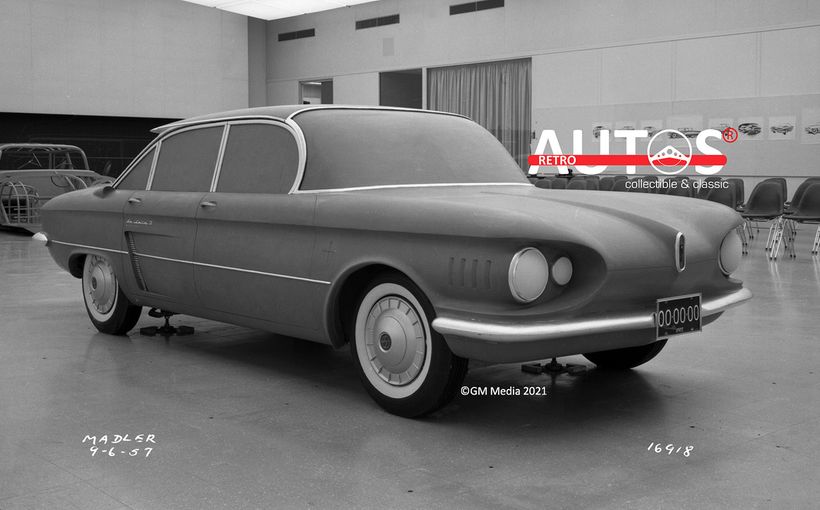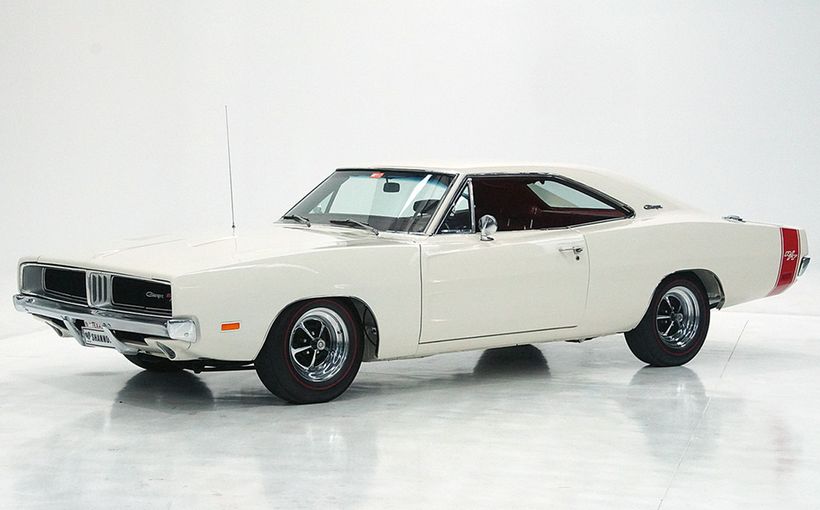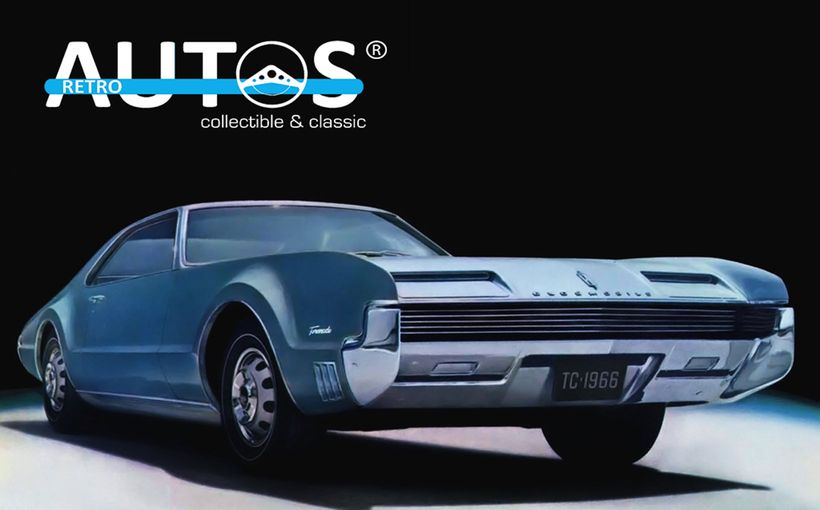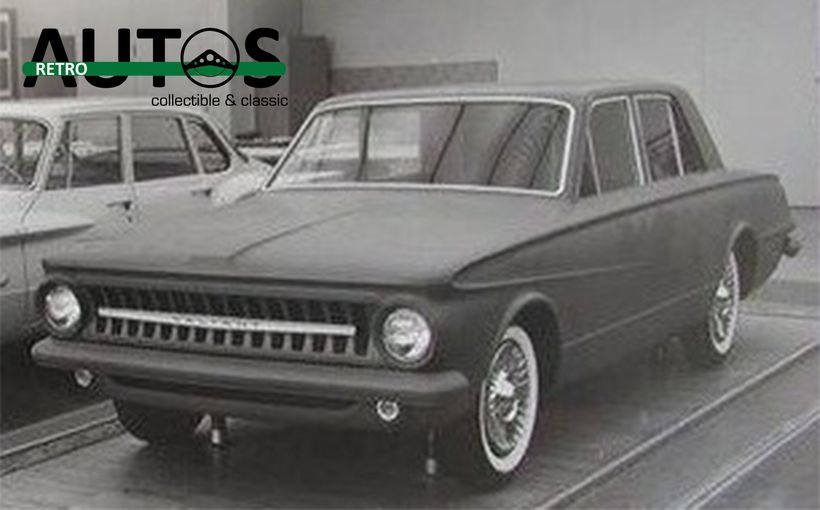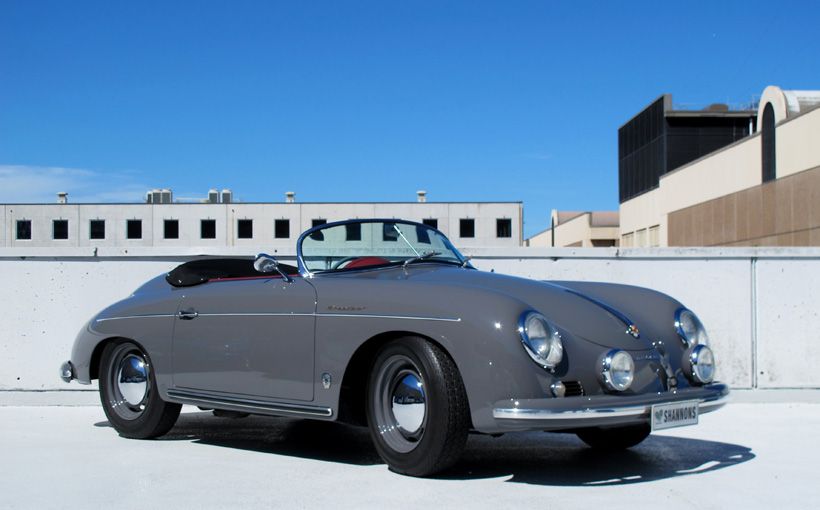Oldsmobile Toronado: The grandest front-wheel-drive car of the 20th Century

From the 1930s through to the end of the 1960s, the Oldsmobile division was the home of engineering innovation for General Motors but until the fall of 1965 when the Oldsmobile Toronado made its debut, no single car had ever fully encapsulated this pioneering spirit. Not only was the Toronado the first front-wheel-drive produced by General Motors anywhere in the world, but it was the front-drive US car since the much-esteemed Cords of the late 1930s.

Image: ClassicCars.com
In 1965 the automotive world was still gripped by Mini-mania. Alec Issigonis’ miniature masterpiece for the British Motor Corporation epitomised the ‘Small is Beautiful’ mantra and represented a triumphant reimagining of the possibilities for very small cars; at once the Mini seemed to render the Morris Minor and those three-wheeler German bubble cars of the late 1950s redundant.
Coming to life in this context – albeit at close to the other end of the size spectrum – was the perhaps equally astonishing Oldsmobile Toronado. I remember at the time there was a sense among the world’s automotive writers that this was a rather extravagant car which failed to maximise space for its occupants in the way of a Mini. Such critics failed to comprehend the enormity of the vision that paved the way for what was one of the two or three most original American cars produced in the second half of the twentieth century: I would rank it ahead of the Chevrolet Corvair, so I’ll just say it was the most significant car produced in Detroit in that half century.

Image: https://en.wheelsage.org/
Perhaps the most distracting aspect of the Toronado in the 1965-66 time frame was its superficial visual similarity to other big American coupes, most notably the 1966 Buick Riviera, with which it shared its E body. The success of the Mini had invited observers of the industry to conclude that the primary purpose of using front-wheel drive was to maximise interior space in relation to overall length – Issigonis’ mission. Indeed, BMC boss Leonard Lord had commissioned ADO15 as a car to meet the constraints imposed by the Suez Crisis: fuel efficiency was its raison d’etre.

Image: https://en.wheelsage.org/
In utter contrast, the Toronado was conceived at arguably the height of the era of US postwar prosperity. Fuel was astonishingly cheap in North America. Even quite low-priced smaller domestic cars such as the Ford Falcon and Pontiac Tempest were often ordered with optional V8 engines. In hindsight, it’s possible to argue that the Toronado was to maximalism what the Mini was to minimalism. The British car had an 0.85-litre engine producing 34 brake horsepower, the American 7.0 litres’ worth producing 210 brake horsepower (DIN) or 385 (SAE). The fact that only one additional adult could be carried in the Oldsmobile was neither here nor there to people who appreciated the Toronado’s power and beauty and saw it for the engineering coup de grace it undeniably was.

Image: https://en.wheelsage.org/
The rear overhang may have been less extravagant than on some luxury American cars but no-one could argue that the Toronado was anything other than a huge car, except by parochial Detroit standards – skimping, compromising were nowhere in evidence.
Perhaps the passing decades have seen the Mini somewhat de-romanticised; by contrast, the Oldsmobile Toronado emerges as a unique machine almost perfectly executed.
It was fitting that the Toronado was an Oldsmobile. (Two years later it effectively became a Cadillac, too, but despite sharing the E body, the Eldo looked completely different.) I mentioned Oldsmobile was the home of engineering advancement within the behemoth General Motors.
During the war years, the visionary Alfred P. Sloan, Jr, had planned the debut of glamorous new models powered by high-compression V8 engines and equipped with automatic transmission. In the final year of World War Two, plans to build a smaller Chevrolet, the Cadet, were abandoned. He may not have been quite the Sloan Ranger in predicting a new age of unprecedented, almost unlimited prosperity but he was a key proponent of the idea:
When Detroit did finally produce its own array of ‘compact’ cars for season 1960, as much as anything this was in response to the success of the Volkswagen Beetle in the US. It is unlikely any of those product planners gave much thought to the Suez Crisis which preoccupied their counterparts in Europe.

Image: https://en.wheelsage.org/
Within GM though, consideration was given to producing a front-wheel-drive compact. Because Oldsmobile was at the corporation’s metaphorical engineering frontier, this was the division privileged with this piece of intellectual property. Already to its credit were synchromesh (1931), Dubonnet independent front suspension (1934), semi-automatic transmission (1937) and Hydra-Matic torque converter automatic (1939). After World War Two, General Motors released its new high-compression V8s simultaneously in the 1949 season’s Oldsmobiles and Cadillacs: it’s a sign of American cornucopia that each of those two marques engineered its own engine. According to the automotive editors of Consumer Guide:
Both divisions had been encouraged to outdo each other, and Cadillac actually raised displacement to maintain a ‘proper distance’ from Oldsmobile’s V8. The Rocket arrived at 303.7 cubic inches; Cadillac had started at 309, then went to 331.
In 1962 the Oldsmobile division introduced the world’s first turbocharged production car, the F-85 Turbo Jetfire V8.
It was in January 1958 that Oldsmobile engineers began working on a front-wheel-drive compact, dubbed the F-85. This feasibility study dictated monocoque construction (still rare in American cars in 1958) and a V6 engine with four-speed automatic transmission. Andrew K. Watt ran the program. He decided to go with a V8 engine instead and noted: ‘There were areas where additional development work was needed, mainly in the driveshaft and chain.’

Image: https://en.wheelsage.org/
By mid-1961 Oldsmobile executives had convinced the corporation that a compact car was not the ideal platform for front-wheel drive; in other words, they had adopted almost directly opposed thinking to that of Issigonis. The primary reason was Watt and his colleagues held the view that chain drive was the way to go.
In 1962 Oldsmobile Assistant Chief Designer David North (working under Stan Wilen) produced his ‘Red Rendering’ dream car and this was the genesis of what became the Toronado.

Image: https://en.wheelsage.org/
What the Mini was to design simplicity, the Toronado would be to engineering complexity – for the former, less was more; for the latter, more was more. Alec Issigonis chose rubber cone suspension. He mounted a smaller capacity (down from 948cc to 848) A-Series engine above the gearbox with shared oil. There was a simple four-speed manual gearbox lacking synchromesh on first.
Seen from this distance in time, the Toronado showcases the best of Detroit. It got its own unique version of Oldsmobile’s 425 cubic-inch big block developing an additional 20 horsepower (SAE). There was a unique ‘split’ automatic transmission. The torque converter was fitted behind the longitudinally mounted engine and connected to the engine via chain drive and sprocket to the Turbo Hydra-Matic gearbox located beneath the left bank of cylinders. This ingenious two-inch wide rubber-damped multi-link chain dramatically reduced mechanical noise and liberated extra space for a bigger interior package. The split transmission meant the engine lived directly above the driven wheels, giving a favourable weight distribution of 54:46.
In the 1966 context, rare indeed was the front-wheel-drive car with power steering; the Citroën Diesse was one. Road tests of the Toronado report some understeer but less than might have been expected, with the light power steering helping to mask this trait.

Image: https://en.wheelsage.org/
With its firmer suspension, the Toronado handled better than most of its American peers and was probably comparable with its kissing cousin Buick Riviera.
Where it surpassed even the Riv was on performance. The Toronado could reach 133 miles per hour. It is easy with the wisdom of hindsight for some commentators to say that the Oldsmobile was over-powered for its chassis (meaning chiefly, its drum brakes). But North American driving habits differed radically from those in continental Europe and even the UK. Despite the attention given to Ralph Nader’s safety evangelising, disc brakes even on the front wheels were a comparative rarity in 1966. The following season front discs were optional on both the Toronado and the newly launched Cadillac Eldorado.
Arguably the most attractive new design for 1963 was the Buick Riviera. Almost equally impressive three seasons later was the Toronado. Essentially, the decision to introduce a front-wheel-drive Oldsmobile gave GM styling boss Bill Mitchell and his studio the opportunity to create another gloriously original design. Look at the two cars side by side and it is easy to see the front-driven flavour of the Olds with its longer front overhangs and more steeply raked rear. Of course, the 1966 Riviera shares the look but retained rear-wheel drive. Enduringly beautiful as the 1963-65 Rivieras are, they do look less avant-garde than the Toronado, perhaps half a decade older rather than a mere three years.
With no transmission tunnel, the Toronado had a pleasingly flat floor. Unequal length axles meant there was none of the expected torque steer. Another nice feature was the door releases in the rear armrests. No surprise, the radical new Olds won Motor Trend’s 1966 Car of the Year award.
Highlights include the flared guards and the fastback roofline culminating in a fashionable (in Europe) Kamm tail (found to be more aerodynamically efficient). Like the 1965 Riviera (first shape, second version), the Toronado had hidden headlights. The elaborately moulded guards had been intended for a Cadillac, but the car that became the new Eldorado was put on hold and so Oldsmobile got them instead.
Interestingly, despite Buick being nominally the next division up the pecking order from Oldsmobile, the Toronado was dearer that the Riviera. The 1966 Riv was priced at $4469. There were two version of the Olds with the standard car commanding $4617 and the Deluxe $4812.
The big change for model year 1967 was the offering of both front disc brakes and radial tyres as options and a Toro thus specified was quite the driver’s car. Styling changes were minor. Sadly sales almost halved from the previous model’s 41,000.

Image: https://en.wheelsage.org/
Detroit had to have its way (of seeking bigger, bolder and brasher) with the greatest Oldsmobile of the 1960s and for 1968 there was a heavy new grille. The following year saw the rear styling beefed up in what the auto editors of Consumer Guide called ‘an apparent effort to create a more conventional notchback appearance.’ There was also a (blessedly optional) vinyl roof, which simply looked excessive. Could the original Toronado have been simply too elegant for the market’s taste?
The good news for the ’68 car was the new W-34 version. With dual exhaust, special camshaft and some other fiddles, it produced an even 400 brake horsepower (SAE) from the new 455 cubic inch V8 which was now standard on the Toro. In standard guise, this big block actually produced 10 horses fewer than the outgoing engine.

Image: https://en.wheelsage.org/
The 1970 model was the last of the first series and this one got exposed headlights (why?).

Image: https://en.wheelsage.org/
Next came an all-new Toronado for the 1971 season on a longer 123-inch wheelbase. Impressively, Oldsmobile pioneered a second set of brake lights mounted just beneath the rear window; this feature was later mandated. Frankly, there was a plethora of Cadillac cues and the Toronado no longer exhibited a unique character.
The 1976-77 XS and XSR models featured a huge wraparound rear window which looked like a caricature of the beautiful Studebaker Starliner’s almost a full (human) generation earlier. But Oldsmobile had trouble manufacturing the flagship XSR with electric self-storing t-tops to the requisite standard and, sadly, this imposing model never made it to the showroom; less than a handful of pre-production cars were produced, along with a very expensive brochure!

Image: https://en.wheelsage.org/
It would be pleasing to report that the Toronado paved the way for GM’s corporate move towards front-wheel drive, but it didn’t. As the auto editors of Consumer Guide report:
Despite its innovative engineering, the Toronado had no direct bearing on GM’s linewide switch to front drive that began with the 1980 X-body compacts. In fact, it would probably have sold just as well with rear drive – as indeed did Buick’s Riviera, which used a rear-drive version of the Toronado platform after 1965 but was always more popular.
The 1979 Toronado shrank to be even smaller than the original. The wheelbase was 114 inches. Small-block engines replaced the colossal units used up until this time.
Finally, the fourth-generation Toronado arrived for 1986. It used a Buick 231 cubic inch (3.8-litre) V6 – soon to be fitted to Holden’s VN Commodore and was built on a 108-inch wheelbase. Retractable headlights returned for the first time since 1969. For 1991 the V6 was improved, there was an electronically controlled automatic transmission and anti-lock brakes were standard. As the auto editors concluded: ‘It was a sad end for a car once so innovative and compelling.’

Image: https://en.wheelsage.org/
While it is easy to mount the argument that the second-gen (1966-1970) Riviera was the finest in a series that lingered on until 1999, most observers agree that the first generation Toronado reigns supreme. Unquestionably the most important Oldsmobile of the 1960s, it now shines as perhaps the brightest example of Detroit’s unique genius. This first postwar American front-driver represented a major engineering breakthrough matched with beautifully conceived design and it is much to be hoped that before long the Toronado will achieve the cult collector car status it plainly deserves.

Image: https://en.wheelsage.org/



